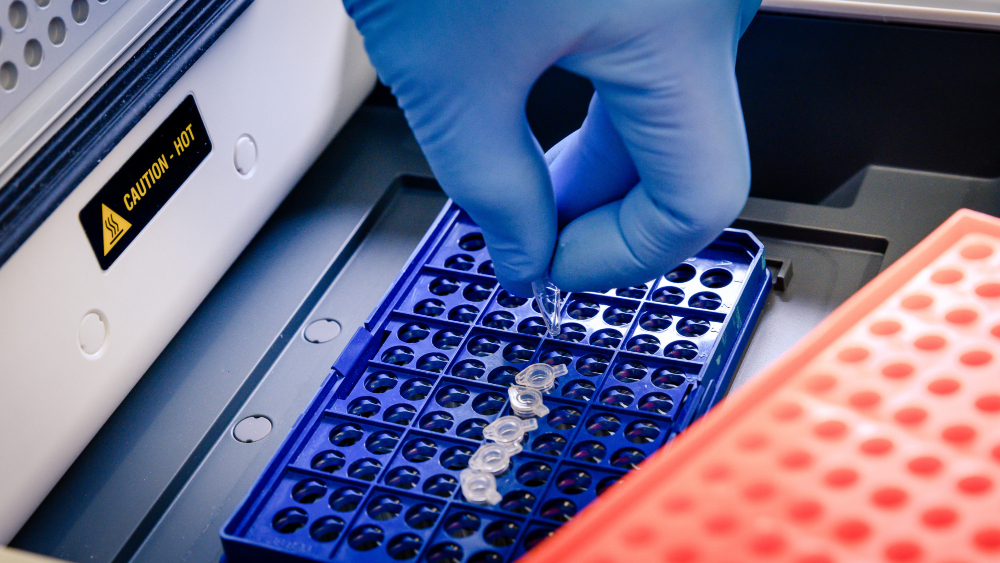What Level of D-dimer is Dangerous?
Last Updated on December 16, 2023 by Lily
D-dimer is a fibrin degradation product, a biomarker that plays a crucial role in assessing the presence of blood clots within the body. While elevated D-dimer levels can indicate various medical conditions, determining what level is considered dangerous requires a nuanced understanding of individual health factors and the specific context in which the test is conducted.
What Is The D-Dimer, Quantitative Test?
A D-dimer test is designed to detect the presence of D-dimer in the bloodstream. Primarily, this test aims to rule out the existence of severe blood clots in the body, as these clots can pose significant health risks and even be fatal. Timely testing and appropriate treatment are crucial to survival and mitigating potential complications related to other medical issues.
D-dimer, a protein or substance central to the body’s overall healing process, plays a key role in forming clots when injuries or wounds cause bleeding. These clots help staunch the flow of blood, and once the bleeding stops, other proteins work to break down these clots. Failure in this process results in the accumulation of D-dimer fragments in the blood. Persistent high levels of D-dimer indicate that clots are not dissolving properly, leading to the formation of other clots—a condition that can be both concerning and life-threatening. The D-dimer test serves as a diagnostic tool to identify such conditions, prompting consultation with a medical professional for an appropriate course of treatment.
What Is The Test Used For?
The primary purpose of the D-Dimer, Quantitative Test is to rule out the possibility of developing thrombotic episodes and other medical conditions associated with it. Healthcare professionals recommend this test to rule out the following conditions:
-
Deep Vein Thrombosis (DVT):
- Presence of blood clots deep inside the veins, commonly in deep leg veins, causing pain and swelling.
- Complications may include pulmonary embolism.
-
Pulmonary Embolism (PE):
- Blockage of pulmonary arteries in the lungs due to blood clots.
- May result in a life-threatening condition.
-
Disseminated Intravascular Coagulation (DIC):
- A severe and rare condition blocking blood flow, categorized under blood clotting disorders.
- Common in individuals with sepsis, cancer, or women recovering from pregnancy.
-
Stroke:
- Reduced or interrupted blood supply to the brain, potentially leading to tissue damage.
Why And When Do You Need A D-Dimer, Quantitative Test?
The test is conducted to confirm whether a specific medical condition is causing symptoms or to rule out the possibility of a medical condition as the primary cause. Individuals may undergo the D-Dimer, Quantitative Test if experiencing symptoms related to blood clotting disorders, such as pulmonary embolism or deep vein thrombosis. The test is typically performed when:
-
DVT Symptoms Are Present:
- Swelling or tenderness
- Pain in legs
- Redness in legs
-
PE Symptoms Are Present:
- Severe cough
- Chest pain
- Breathing difficulty
- Fast heartbeat
The test is performed when the likelihood of developing blood clots is moderate to low. High-risk individuals may require additional tests to confirm the presence of clots, especially in cases involving clotting diseases, major surgeries, injuries, extended periods of immobility, pregnancy, or certain cancers.
Additionally, the D-Dimer, Quantitative Test is used to rule out disseminated intravascular coagulation (DIC) and assess the effectiveness of DIC treatment.
What Kind Of Sample Is Required For The Test?
For the D-Dimer, Quantitative Test, a healthcare professional will draw a blood sample from the veins in your arms using a small needle. The process takes only 2-3 minutes, and while you may feel a brief sting, any discomfort typically subsides quickly.
Do You Need To Prepare For The Test?
There is no special preparation required for the test. As a standard blood test, fasting or dietary restrictions are unnecessary. After the test, you may experience mild soreness or bruising at the injection site, which usually resolves within a few minutes.
Are There Any Risks To This Test?
No, there are no significant risks associated with the D-Dimer, Quantitative Test.
What Do The Test Results Mean?
-
Normal or Negative Results:
- D-dimer levels below the predetermined threshold.
- Indicates a low likelihood of acute medical conditions or abnormal clot formation.
- Valid and suitable for individuals at low to moderate risk of developing thrombosis.
-
Positive Results:
- Abnormally high levels of fibrin degradation elements.
- Suggests significant thrombus or blood clot breakdown and formation.
- Cause and location of the clots remain unknown, possibly indicating venous thromboembolism (VTE) or disseminated intravascular coagulation (DIC).
It’s crucial to note that the presence of D-dimers in the blood may not always indicate blood clots. Other factors like trauma, recent surgeries, heart attacks, infections, cancerous cells, and diseases involving fibrin formation and breakdown can also elevate D-dimer levels. Consulting with a healthcare professional is essential for accurate interpretation and appropriate follow-up actions.
FAQs about the D-Dimer, Quantitative Test
Q1: What is D-dimer, and why is it significant in the body’s healing process?
D-dimer is a protein involved in the body’s healing process, particularly in the formation and dissolution of blood clots. When injuries cause bleeding, proteins like D-dimer help form clots to stop the bleeding. The body then directs other proteins to break down these clots, resulting in D-dimer fragments in the blood.
Q2: Why is a D-Dimer, Quantitative Test necessary?
This test is crucial for ruling out severe blood clots in the body. Abnormal clot formation can be life-threatening, making prompt testing and treatment essential.
Q3: What medical conditions does the test help rule out?
The test is used to rule out conditions such as Deep Vein Thrombosis (DVT), Pulmonary Embolism (PE), Disseminated Intravascular Coagulation (DIC), and strokes.
Q4: When do I need a D-Dimer, Quantitative Test?
If you exhibit symptoms related to blood clotting disorders, such as pain, swelling, or breathing difficulties, your doctor may recommend this test. It’s performed when the likelihood of developing blood clots is moderate to low.
Q5: Are there specific symptoms associated with DVT and PE?
Yes, symptoms of DVT include swelling, tenderness, pain, and redness in the legs. PE symptoms may include severe cough, chest pain, breathing difficulties, and a fast heartbeat.
Q6: Is there any preparation required for the test?
No special preparation is needed. It is a standard blood test, so fasting or dietary restrictions are not required.
Q7: Are there risks associated with the D-Dimer, Quantitative Test?
No significant risks are associated with the test. Some individuals may experience mild soreness or bruising at the injection site, which typically resolves quickly.
Q8: What do positive and negative results indicate?
Negative results suggest D-dimer levels are below the threshold, indicating a low likelihood of abnormal clot formation. Positive results indicate abnormally high levels of fibrin degradation elements, suggesting significant thrombus or blood clot breakdown and formation.
Q9: Can factors other than blood clots affect D-dimer levels?
Yes, factors like trauma, recent surgeries, heart attacks, infections, cancerous cells, and diseases involving fibrin formation and breakdown can impact D-dimer levels.
Q10: How should I interpret my test results?
Consult with your healthcare professional for accurate interpretation and appropriate follow-up actions based on your specific medical history and symptoms.
Related Posts

Kratom and Drug Testing: Navigating Real-World Scenarios

Step-by-Step Guide to the Certo Drug Test Technique

Took Drug Test Thursday When Should I Know Results
About Author
Lily
I'm Lily, a freelance writer with a deep understanding of Healthcare. Based in the United States, I specialise in creating high-quality content on a wide range of Health topics, from urgent care and medical and hospitality.
